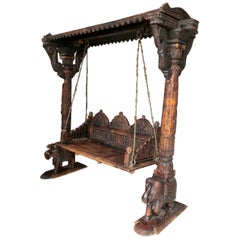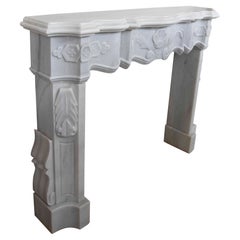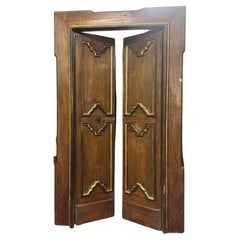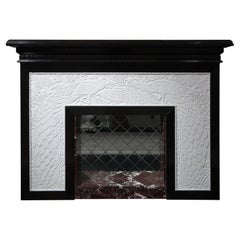Hand-Carved Building and Garden Elements
Late 20th Century Indian Hand-Carved Building and Garden Elements
Wood
1990s Spanish Hand-Carved Building and Garden Elements
Marble
18th Century Italian Antique Hand-Carved Building and Garden Elements
Chestnut
2010s Chinese Art Deco Hand-Carved Building and Garden Elements
Marble
Early 20th Century English George IV Hand-Carved Building and Garden Elements
Mahogany
Mid-19th Century Chinese Rustic Antique Hand-Carved Building and Garden Elements
Limestone
Late 19th Century French Neoclassical Antique Hand-Carved Building and Garden Elements
Breccia Marble
2010s French Hand-Carved Building and Garden Elements
Cast Stone
Early 19th Century Italian Neoclassical Antique Hand-Carved Building and Garden Elements
Marble
Late 18th Century Rococo Antique Hand-Carved Building and Garden Elements
Marble
19th Century Italian Antique Hand-Carved Building and Garden Elements
Poplar
Early 20th Century Belgian Hand-Carved Building and Garden Elements
Stone
21st Century and Contemporary Georgian Hand-Carved Building and Garden Elements
Granite
19th Century Italian Classical Roman Antique Hand-Carved Building and Garden Elements
Stone, Sandstone
17th Century Italian Other Antique Hand-Carved Building and Garden Elements
Carrara Marble
21st Century and Contemporary French Hand-Carved Building and Garden Elements
Limestone
Mid-19th Century Italian Neoclassical Antique Hand-Carved Building and Garden Elements
Wire
19th Century Chinese Antique Hand-Carved Building and Garden Elements
Wood
20th Century French Other Hand-Carved Building and Garden Elements
Marble
18th Century French Antique Hand-Carved Building and Garden Elements
Stone
21st Century and Contemporary European Hand-Carved Building and Garden Elements
Marble
20th Century French Gothic Hand-Carved Building and Garden Elements
Wood, Pine
Early 19th Century Austrian Antique Hand-Carved Building and Garden Elements
Iron
Early 18th Century Indian Anglo Raj Antique Hand-Carved Building and Garden Elements
Wood
20th Century French Louis XVI Hand-Carved Building and Garden Elements
Metal, Bronze
1870s French Antique Hand-Carved Building and Garden Elements
Marble
Mid-19th Century Chinese Antique Hand-Carved Building and Garden Elements
Rosewood
18th Century English Adam Style Antique Hand-Carved Building and Garden Elements
Pine
19th Century French Louis XV Antique Hand-Carved Building and Garden Elements
Marble
18th Century Italian Antique Hand-Carved Building and Garden Elements
Wood
19th Century Chinese Qing Antique Hand-Carved Building and Garden Elements
Stone
Late 19th Century Chinese Qing Antique Hand-Carved Building and Garden Elements
Sandstone
Mid-20th Century Burmese Hand-Carved Building and Garden Elements
Alabaster
18th Century French Louis XV Antique Hand-Carved Building and Garden Elements
Stone
Early 20th Century Spanish Neoclassical Revival Hand-Carved Building and Garden Elements
Alabaster
Late 18th Century French Louis XV Antique Hand-Carved Building and Garden Elements
Pewter
18th Century French French Provincial Antique Hand-Carved Building and Garden Elements
Stone, Limestone
Early 19th Century French French Provincial Antique Hand-Carved Building and Garden Elements
Sandstone
Early 20th Century Indian Primitive Hand-Carved Building and Garden Elements
Metal, Wrought Iron
Mid-19th Century Italian Antique Hand-Carved Building and Garden Elements
Walnut
21st Century and Contemporary Italian Hand-Carved Building and Garden Elements
Stone, Limestone
21st Century and Contemporary European Hand-Carved Building and Garden Elements
Marble
17th Century Italian Antique Hand-Carved Building and Garden Elements
Walnut
2010s Hand-Carved Building and Garden Elements
Teak
15th Century and Earlier French Antique Hand-Carved Building and Garden Elements
Stone
19th Century French Louis XIV Antique Hand-Carved Building and Garden Elements
Marble, Bronze
1810s American American Empire Antique Hand-Carved Building and Garden Elements
Marble, Brass, Steel
1880s French Black Forest Antique Hand-Carved Building and Garden Elements
Fruitwood
18th Century Spanish Antique Hand-Carved Building and Garden Elements
Stone
20th Century Louis XVI Hand-Carved Building and Garden Elements
Marble
Early 19th Century English Empire Antique Hand-Carved Building and Garden Elements
Marble
18th Century French Antique Hand-Carved Building and Garden Elements
Stone
18th Century Italian Baroque Antique Hand-Carved Building and Garden Elements
Wood
Mid-20th Century Chinese Chinese Export Hand-Carved Building and Garden Elements
Stone
18th Century Italian Other Antique Hand-Carved Building and Garden Elements
Wood
Late 20th Century Indian Hand-Carved Building and Garden Elements
Marble
18th Century Italian Antique Hand-Carved Building and Garden Elements
Poplar
19th Century English Gothic Revival Antique Hand-Carved Building and Garden Elements
Marble, Belgian Black Marble
19th Century Italian Antique Hand-Carved Building and Garden Elements
Walnut
Early 19th Century French Louis XV Antique Hand-Carved Building and Garden Elements
Iron
Read More
39 Incredible Swimming Pools
It's hard to resist the allure of a beautiful pool. So, go ahead and daydream about whiling away your summer in paradise.
This Lavish 18th-Century Chimneypiece Comes from a Historic Scottish Estate
The exceptionally crafted mantel was saved despite the home’s regrettable demise.
A Pair of Monumental Stone Tigers Protect and Guide Wandering Souls
The Qing dynasty beasts honored the dead and warned off malicious spirits.
Andrés Monnier’s Stone Tub Makes Bathing a Rite of Renewal
The dramatic piece transforms a daily scrub into an act of communion with the elements.
Meet the Siblings behind the Exquisite Outdoor Furniture of McKinnon and Harris
Anne and Will Massie apply the lessons of the past to create alfresco pieces as timeless as the traditions that inspire them.
35 Wondrous Outdoor Dining Spaces
Eating meals alfresco is one of the great pleasures of warm weather, and a beautifully appointed space only heightens the experience. Get inspired by these delectable dining areas as you think about creating your own outdoor oasis.
In These Chic Homes, Indoors and Outdoors Freely Mingle
Through potted plants, garden furniture, nature-inspired art and architectural apertures, designers are bringing the outside in.
24 Perfect Patios with Fire Pits and Fireplaces
In these stylish spaces, the outdoor season extends year round.





